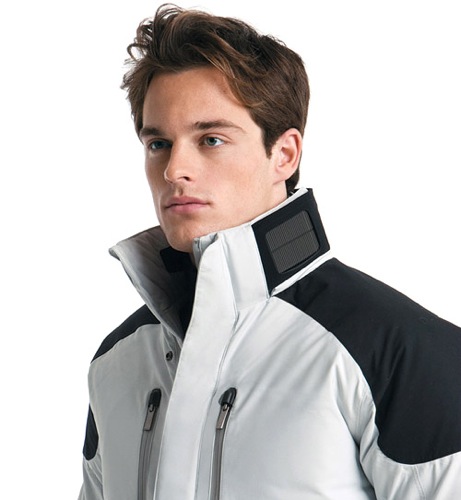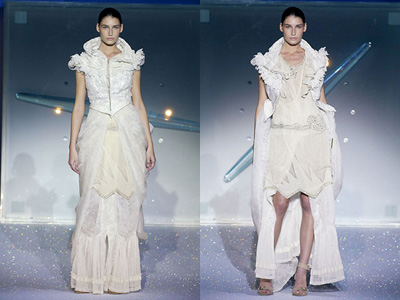 (image via industrialnation.nl)
(image via industrialnation.nl)
Anouk Wipprecht from the Netherlands creates incredibly beautiful garments that will make you drool. Her recent work explores the uses of Lumalive. One of the many beautiful elements of her work is that she takes advantage of the implied gestures in her garments such as pulling a large collar up and over your head for protection or pulling it down around your shoulders for warmth.
What I like about this piece is that she uses these gestures as the interactions that reveal the display. But gestures aren't the only thing that should be considered, there is also context and mode. Imagine the mode a wearer is in when she adjusts the garment. She might be getting ready to go from one place to another when the garment is pulled around the shoulder or up around the head. How could a display help aid in this state? Or perhaps she is at her destination when she drapes it over her shoulders. How might this affect the response and output of the technology?


